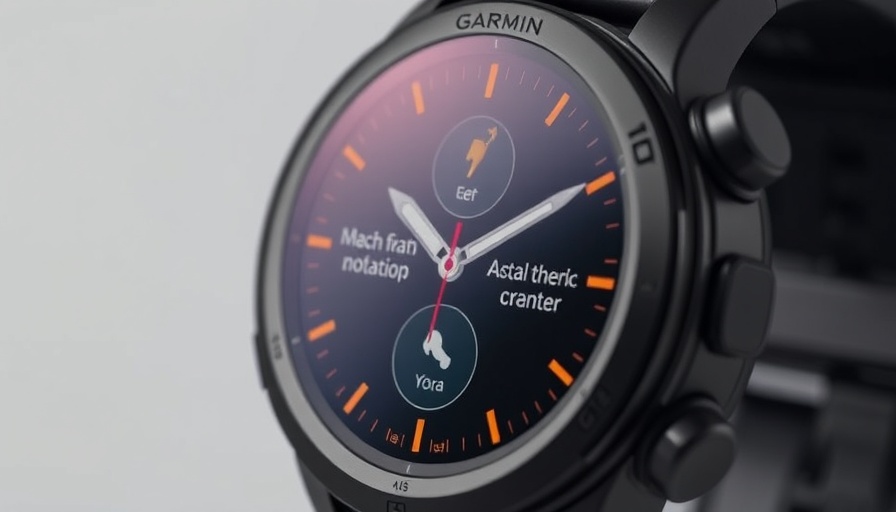
The Case of the Off-Centered Display: What It Means for Users
For fitness enthusiasts and tech-savvy gym owners alike, the integrity of wearables like the Garmin Instinct 3 Solar is crucial. Recent reports have brought to light an alarming trend: users are experiencing off-center mini displays on their devices. As individuals return malfunctioning units only to find replacements with the same issue, the question looms larger: Is this a mere manufacturing glitch or a broader concern reflecting Garmin’s quality control?
Historical Context: The Evolution of Garmin Devices
Garmin, a leader in the GPS and wearable tech industries, has built a reputation for durability and precision. However, the recent waves of complaints about display misalignments make one wonder if a pattern is emerging. The Instinct series has previously faced scrutiny — users have recalled the flipped polarities reported in the Instinct 2 models, raising questions about the company's manufacturing consistency. Such historical challenges could signal deeper issues in both quality assurance and customer feedback responsiveness.
Understanding the Community Sentiment
Among gym owners and fitness enthusiasts, the alignment of technological precision and functionality is vital. The potential of receiving a faulty product is frustrating. One user lamented, "I don’t see the fairness of going through a long replacement process." This sentiment resonates within the community, as members feel frustrated not just with the product itself but also with the seeming lack of accountability from the manufacturer. Users shared images online, venting frustrations while hoping others would find solutions. The community's voices reflect a desire for clarity and assurance, fueling speculation on possible long-term impacts.
Future Predictions: Will Garmin Address These Issues?
The outlook for the Garmin Instinct 3 Solar hinges on how the company responds. Will they acknowledge the potential scale of this defect and issue a fix or replacement? Opinions vary, with some users predicting that while Garmin may address this in future iterations, immediate solutions are unlikely. As one user commented, if the issue reflects a broader trend, future models like the Instinct 4 might need to step up the game significantly. This anticipation places pressure not only on Garmin but also on user expectations for reliability.
Benefits of Staying Informed on Tech Issues
For gym owners and personal trainers, understanding the technological landscape, including its pitfalls, is crucial for optimizing their training tools. Staying informed not only aids in making educated purchasing decisions but also ensures that clients rely on equipment that meets professional standards. Engaging with community feedback goes beyond product evaluations; it fosters a proactive approach to enhancing training environments.
Common Misconceptions About Wearable Devices
Many believe that wearables come from manufacturers free of flaws. However, as this situation demonstrates, products can face early testing hurdles that uncover serious defects. Users must embrace the reality that even top brands like Garmin can and do have quality control inconsistencies. Keeping expectations aligned with real-world experiences can lead to better purchasing decisions and foster stronger relationships between consumers and manufacturers.
In conclusion, as the dust settles on the Garmin Instinct 3 Solar's display issue, both users and Garmin find themselves at a crossroads. The resolution of these concerns can determine customers' ongoing trust and usage of Garmin’s product line. As we await further updates, users are encouraged to share their experiences: it can lead to collective voices prompting necessary changes in the tech landscape that prioritize quality and customer satisfaction.
 Add Row
Add Row  Add
Add 




Write A Comment